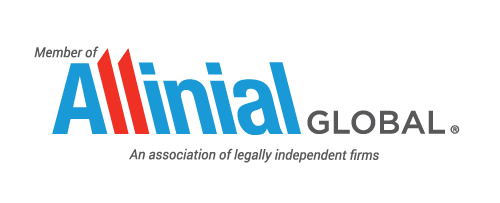Do you operate an export trading business in China, partnering with manufacturers and suppliers to source products for export? Or are you an export-oriented manufacturing company in China that produces goods for consumption in your home market? In either case, the preferential export VAT refund system will be of particular relevance to you.
Recently, China’s State Taxation Administration (“STA”) has introduced a slew of policies to reduce the financial strain on export enterprises. A mainstay of China’s national taxation policy, the export tax rebate system seeks to spur the development of foreign trade. From the start of 2022 to November of the same year, the combined value of tax refunds and tax exemption amounted to RMB 1.64 trillion, marking a 14.9 per cent year-on-year increase.
The STA has been continuously optimising tax refund procedures to facilitate export activities. In 2022, the average time for processing export tax refunds was cut to six working days, with a further reduction to three working days for certain enterprises with better credit ratings. By streamlining record-filing and reporting requirements, China strives to create a more favourable business environment conducive to international trade.
This article provides an accessible overview of how the export VAT refund system works in China.
What is the export VAT refund system?
Overview
To understand the rationale behind the rebate system, it is first necessary to consider how the VAT system works in China. In accordance with China’s VAT rules, a business is obligated to pay VAT on the difference between its output VAT and input VAT.
Output VAT refers to the amount of VAT that a business charges on sales of goods or services. Such sales are deemed outputs. Input VAT, on the other hand, refers to the VAT that is added to the price of goods or services purchased by a business. These are business expenses incurred in carrying on business activities. This amount is used to offset the output VAT that a business accrues from its sales.
The above offsetting mechanism, however, cannot apply in the case of exports. In China, exports are zero rated for VAT purposes. This means that China does not levy VAT on goods as well as certain services destined for export. In other words, there is no output VAT against which to offset the input VAT.
To address this imbalance which disadvantaged exporters financially, the export VAT rebate scheme was introduced, providing for the full or partial recovery of input taxes paid. It allows qualifying businesses in China to claim back VAT paid on purchases of goods or services that are related to the business’ provision of VAT taxable goods or services. For example, the VAT incurred in the course of production, procurement, and distribution can be reclaimed.
There are currently two refund mechanisms available to exporters based on the nature of their operations.
Exemption, Deduction, and Rebate (“EDR”) method
The EDR method applies to export-oriented manufacturing enterprises. Under this method, “exemption” refers to the exemption from output VAT on goods that are exported by manufacturing enterprises themselves or via foreign trade enterprises acting in the capacity of agents.
“Deduction” refers to the offsetting of input VAT paid on raw materials and constituent parts used in the manufacture of export goods against the output VAT charged on goods sold domestically. This applies to enterprises that both export to overseas markets and sell goods in China’s domestic market.
“Rebate” refers to the refund of any input VAT left over after the offsetting exercise. Where output VAT is greater than input VAT, enterprises will not be eligible for a refund. For manufacturing enterprises solely engaging in export activities with no domestic sales, no output VAT shall apply. Hence, the refund will only comprise the portion that relates to input VAT.
Exemption and Rebate (“ER”) method
The ER method applies to export-oriented trading enterprises with no manufacturing activities. Under this method, goods exported by trading enterprises are exempt from output VAT. In addition, input VAT incurred can be fully or partially refunded. The recoverable amount is determined by the applicable export VAT refund rate, which ranges from 0 per cent to 13 per cent. The refund rate is, in turn, based on the assigned commodity category of the exported good in question. In cases where the refund rate is 13 per cent, input VAT can be fully recovered. However, where the refund rate is lower than 13 per cent, the exporter must bear the cost of the difference. Low refund rates are usually applied to products that consume a significant amount of resources or energy, or emit high levels of pollutants.
Which exports are eligible for VAT refund?
Firstly, only goods declared as exports qualify for rebate purposes. Goods that are intended for domestic sale and not declared as exports are not eligible. The fact that the enterprise settles payments in a foreign currency or adopts certain financial management practices plays no role in determining the good’s status as an export commodity.
Secondly, the goods must also be considered exports for accounting purposes. Exporting goods that are not intended for trade, such as donations, samples, and mailings, is not treated as a sale under accounting rules. For this reason, they are not eligible for tax rebate.
Thirdly, the goods must be VAT taxable or subject to consumption tax. Goods that fall outside scope include agricultural products sold directly by producers as well as consumer products from 11 categories, such as tobacco, alcoholic beverages, and cosmetics.
Lastly, the goods must have been duly verified for export and for which payment has been settled.
For export-oriented manufacturers, the goods for which tax rebate is applied must be produced by the same enterprise in question.
Besides goods, certain services may also be able to enjoy preferential tax treatment, although eligibility can oftentimes be harder to establish. Examples of qualifying services include:
- Information systems, software, circuit design and testing services
- Business process management services
- Research and development services
- Services related to media production and publication
- Certification services
- Trademark and copyright transfer services
- International transportation services
- Technology-related consulting and advisory services
- Energy management services
- Telecommunication services
Who is eligible for export VAT refund?
Generally, to be eligible for export VAT refund, the export enterprise must:
- Be a general taxpayer;
- Have a legitimate business address;
- Be duly registered for tax purposes;
- Hold import and export rights;
- Have a business scope that includes import and export activities;
- Carries out normal foreign exchange transaction and settlement activities;
- Fulfils its social insurance obligations towards its employees;
- Hold special permits if exporting certain products, such as vehicles, lubricants, and paraffin wax;
- Have completed the necessary record-filing procedures for export tax rebate.
What documents are required for submission?
You will need to submit the following documents to apply for export VAT refund:
- Export VAT tax refund filing form
- Foreign Trade Operator filing form or the Certificate of Approval for Establishment of Foreign-invested Enterprises
- Business licence
- Certificate of Registration for Customs Clearance Entities
- Purchase and sale contracts, including export contracts, foreign trade service contracts, purchase contracts signed with foreign trading entities, and purchase contracts for goods manufactured by a third party and designated for export
- Shipping and transport documents, such as waybills, bills of lading, freight forwarding documents, freight forwarder service fee invoices, etc.
- Other relevant documents as required by the authorities
Additionally, you are required to retain and properly store the relevant documents for a period of five years.
How easy is it to apply for export VAT refund?
Over the years, China’s STA has rolled out a series of policies aimed at streamlining and simplifying tax rebate procedures. Most notably, alongside nine authorities, the STA promulgated a host of support measures in the Notice on Further Enhancing Support for Export Tax Refund to Promote the Stable Development of Foreign Trade in 2022. The measures have helped reduce operational expenses and alleviate cash constraints for export enterprises.
In the past, the documentation requirements and filing procedures were rather burdensome, involving reams of paperwork. Thanks to the optimisation of the tax refund system, exporters can now benefit from a faster and more efficient recovery of input taxes paid. The key changes are as follows:
- Electronic submission
Applications for export tax refund as well as other filing procedures, such as registration, claims, and certification, can now be processed and completed online.
- Digital retention of documents
The option of digitally storing the relevant record-filing documents, including invoices, contracts, and shipping documents, is now available to exporters. If enterprises opt for retention in hardcopy, they are required to specify the location in which the documents are stored.
- Scrapping of onerous documentation requirements and procedures
The STA has scrapped the requirement to submit proof of foreign exchange settlement, except in a few limited cases. For example, this does not apply to poorly rated exporters or late applicants. In addition, the previous requirement for pre-declarations on export tax refund and VAT exemption to be made has been removed. Furthermore, export enterprises are no longer required to file VAT tax returns, import declarations, and export tax refund declarations.
What can CW do for you?
At CW, we understand the various intricacies and complexities of export VAT refund procedures. With over 30 years’ experience and profound knowledge of local tax regulations, our seasoned tax professionals can help you holistically analyse the implications of export VAT refund policies on your business, assist you with the application process every step of the way, and offer comprehensive and professional tax advisory services in China.
To reclaim input taxes you have paid in China, contact us today.

